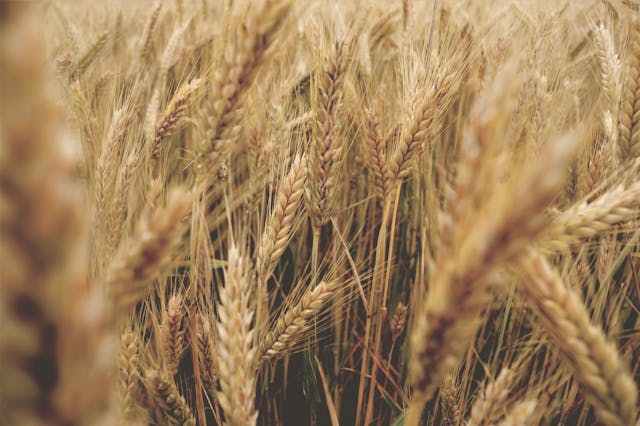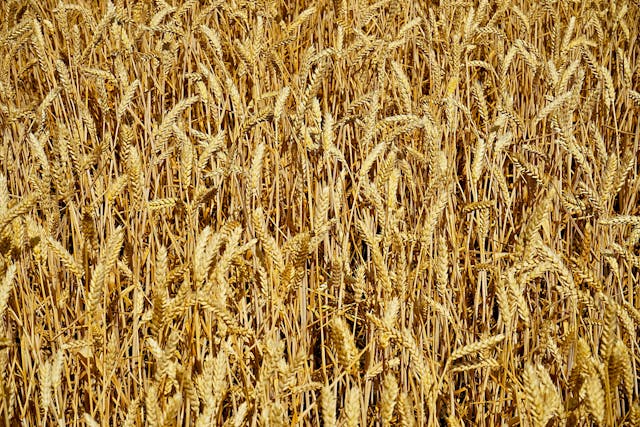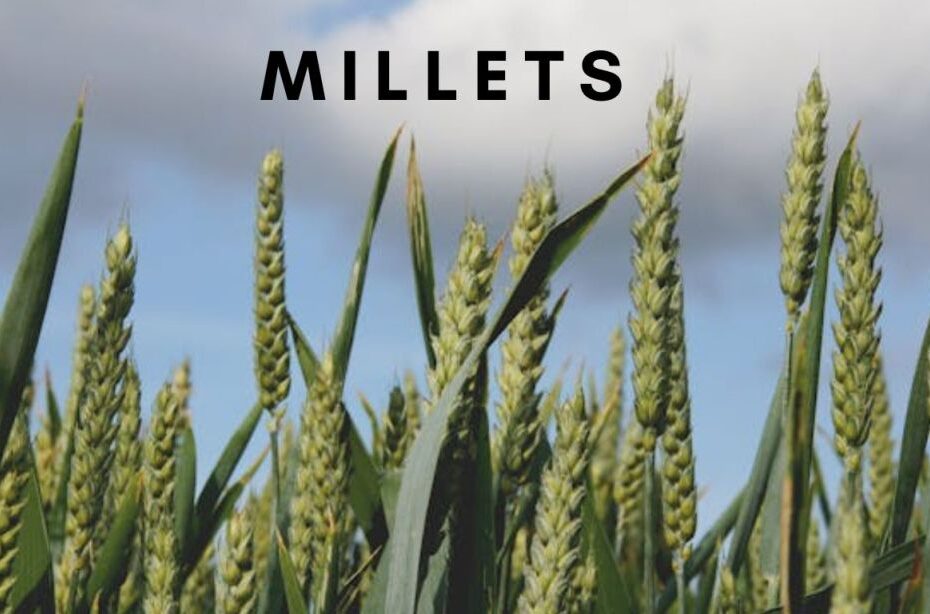Millets are rich content of different minerals, vitamins, fibre etc and can protect against several diseases. India is the largest producer of these crops among all countries in the world. There are several types of millets available with their unique characteristics. So go through this article to know in detail about the most beneficial crops.
What is Millets?
Millets are small-seeded grasses, widely grown cereal crops or grains for fodder and human food. Generally, most species of the crops are referred to as the millets belonging to the tribe Paniceae.
These are some of the popular crops or grains that have several disease protection capabilities including blood sugar, cholesterol, and blood pressure. These crops are rich content of different minerals, vitamins, fibre etc.
Millets are a good substitute for wheat and rice. It is 3 to 5 times superior than rice and wheat.
The warm weather is preferred for harvesting this crop.
There are various types of millets available with their unique characteristic. The major portion of the world basis demand for millets is fulfilled by India. It is the largest producer of millet in the world.
Various Features of Millets:
- A group of highly variable small-seeded grasses.
- Popular as cereal crops or grains for both human food and fodder.
- It can cure several health issues.
- It is a rich source of fibre,minerals(magnesium, phosphorous, iron,calcium, potassium, zinc, etc)
- Each millet is 3 to 5 times superior to rice and wheat in terms of protein, minerals, and vitamins.
- It is also gluten-free and suitable for people with allergies to wheat.
- It is also more effective for diabetic patients to lose weight.
- Millets require warm weather for germination and development.
- It is more sensitive to frost.
- It is cultivated from mid-June to mid-July month.

Factors Required for the Cultivation of Millets:
There are some basic criteria needed for the cultivation of millet. Those are including
Proper temperature:
It is susceptible to frost. The warm weather for germination and development is required to cultivate these grains. It is cultivated in the mid of Jun and mid of July every year. The optimum soil temperature range for seed germination is between 67°F and 85°F. These grains are often grown as catch crops.
The right soil:
The loamy soil is the first preference to produce this crop as it has a well-drained property. Extreme drought conditions and water-logged soils are the main culprits for the cultivation of this crop.
Fertiliser and Lime:
Usually, the most limiting nutrient in millet production is nitrogen. But based on the soil requirement, phosphorous and potassium are the basic minerals needed for the cultivation of millet. Except for straight phosphorous fertilizer, avoid drilling raw application of fertilizer. It may cause seeding injury. Keep it just a short trick, a pH level of 5.6 or higher is recommended for the cultivation of these grains.
8 Types of Millets and Their Alternative Names:
There are several types of millet available in the world and the names are different as per the region. Here the details of 8 types of millets have been mentioned with their alternative names.
- Sorghum or Jowar
- Pearl Millets or Sajjalu or Bajra
- Finger Millet or Ragi
- Foxtail Millet or Korralu or Kangni
- Kodo Millet or Akara
- Proso Millet or Baragu
- Barnyard Millet or Sanwa
- Amaranth Millet or Rajgira
1.Sorghum or Jowar:
The most popular name for millet is sorghum, normally known in India as Jowar. It is used to make rotis. It is a rich food of iron, fibre and protein. This type of millet is used for reducing cholesterol levels. It is the cereal grain plant of the grass family and starchy seeds.
This millet has high nutritional value with protein, fibre, minerals and high levels of unsaturated fats. It helps to develop metabolism.
The other names of sorghum are great millet, Indian millet, milo, durra etc. Sorghum is a strong grass family and usually grows up to 4.6 meters.
Criteria for Cultivation:
To generate the maximum grains in a year, it requires an average temperature of 25°C. The plants are to be grounded early enough to increase the yields. The long growing season is generally 3 to 4 months. The most vital point is that it cannot be planted until the soil temperature reaches below 17°C.
Insects and Diseases:
The main sources of yield loss are birds, corn earworms, lepidoptera larvae, moths etc. It is a high-nitrogen and moderate phosphorous and potassium feeding crop.
Water Requirement:
The production of the plant is severely affected by the water-holding capability of the soil. It requires 80 to 110 millimetres of moisture every ten days in the early stage of growth. The roots penetrate more deeply into the soil to tap into the hidden water reserves. As the plant grows, it needs gradually less water. This type of crop has a waxy coating on its leaves and stems that helps to keep water in the plant even in extremely hot weather.
2.Pearl Millets or Sajjalu:
India is the largest producer of the pearl millet. It is the second most important millet in India. Phosphorus is an important element that plays a role in the structure of body cells. Pearl millets are a rich source of this important element. It is harvested generally between September and February of every year. The plans are generally grown up to 4.5 meters.
The draught-prone, low soil fertility and high-temperature areas are well adopted by the pearl millet. This summer annual crop performs well in soil of low pH and is well suited for double cropping and rotations.
It can be grown in areas where other cereal crops would not survive due to its tolerance to hard-growing conditions.
The other names of this type of millet are Bulrush millet, Babala, Bajra, Dukhn, Gero, Sajjalu, Sauna etc.
3.Finger Millet or Ragi:
The most popular millet in southern India is finger millet especially known as African finger millet, red millet, ragi etc. This type of millet is a rich source of iron, calcium, protein and some other common minerals. Its antioxidant activity and a good number of essential amino acids play a crucial role in the human body.
This crop is a healthy substitute for rice and wheat and acts as the powerhouse of nutrition. Moreover, this gluten-free millet is very good for brain development in growing kids. It also plays a role in reducing weight.
The fine seedbed is suitable for small grains that can ensure good germination, plant population density and weed control effectively. Only the soil containing coarse sand is to be avoided for its farming.
4. Foxtail Millet or Korralu:
The pest-free and rich amount of iron content millet is foxtail. It plays a vital role in reducing blood sugar and cholesterol levels and also increases HDL cholesterol. The immunity will be increased due to the presence of iron and calcium in this type of millet.
The foxtail millet is a more popular crop in South India, China and in the countries of Southeast Asia. The cultivation time required is around 2 to 2.5 months. It is appropriate for the proper rise in dry areas due to the efficient use of available water and early maturity.
5.Kodo Millet or Akara:
This millet is suitable for reducing blood pressure and cholesterol levels. It is a rich source of B vitamins, calcium, iron, potassium, magnesium, zinc etc. Moreover, it contains a high amount of polyphenols(an antioxidant compound), low fat, and high fibre.
Kodo millet is a heat-loving plant and is grown where rainfall ranges from 600 mm to 1000mm. The ideal temperature for its normal growth is 26°C to 28°C and requires about four months for its maturity and harvesting.

6.Proso Millet or Baragu:
It is also called common millet, hog millet, broom corn Hershey & white millet etc. This millet is capable of producing seed from 2 to 3 months after planting.
It is low demanding crop and is used in an organic farming method in Europe. It is susceptible below the temperature of 10 deg C.
7.Barnyard Millet or Sanwa:
The other names of this type of millet are Moraiyo or Mordhan. This low-calorie millet tastes is like broken rice and is rich content of iron, protein and fibre. To get the best result it should be cooked with minimum oil.
8. Amaranth Millet or Rajgira:
One of the protein-rich millet is Amaranth millet or Rajgira. It helps repair and facilitates quick recovery from the disease due to its excellent anti-inflammatory properties. Hence it reduces inflammation. This millet can be consumed in the winter and summer seasons. Also, it can be used with nuts and dates as energy-boosting agents.
Apart from the list mentioned above, there are also some different types of millet available such as little millet, Teff, Fonio, Brown millet etc.
The places of cultivating millet on a large scale:
The world’s largest millet producer is India. There are some places in Europe, America, and Africa including Mali, Nigeria, Niger etc where millet is cultivated on a small scale.
Moreover, millets are also formed as an important part of the prehistoric diet in Chinese and Korean societies.
Millets are mainly cultivated on a large scale in Indian states like Uttar Pradesh, Punjab, Andra Pradesh, Tamil Nadu, Rajasthan, Maharashtra, and Gujrat.
Various Diseases of Millet:
Head Smut: The proso millet can be affected by this disease and is restricted by seed treatment.
Kernel Smut: This disease can be preset in both foxtail and proso millet. It can be controlled effectively by crop rotation and seed treatment.
Grain Mold: This disease is mainly observed in Sorghum millet. Pearl and Finger millet may be affected also by this disease.
The different nutritional elements present in the millet:
- Carbohydrates
- Protein
- Fat
- Calcium
- Iron
- Vitamin
- Zinc
- Fibre
Different Products made from the Millets:
- Edible oil
- Dextrose ( a sugar)
- Paste
- Alcoholic beverages
- Fodder and building materials(Stalks are used)
- Syrup
- Ethyl alcohol
- Roti or flatbread
- Cakes, cookies, biscuits
How can I begin my journey to the Millets farm?
The millet farming is a profitable business. India is the largest producer of millet in the world. Millets are mainly cultivated on a large scale in Indian states like Uttar Pradesh, Punjab, Andra Pradesh, Tamil Nadu, Rajasthan, Maharashtra, Gujrat, etc. The maximum millet cultivation occurs in the Kharif period or warm weather. There are various processes to be performed for making the millets farm including:
- Selection of a variety of millet
- Soil preparation or selection of the right soil.
- Seed selection and Sowing
- Preparation of Seedbed
- Selection for suitable climatic conditions
- Irrigation including germination
- Weed completion
- Application of the fertiliser
- Pest and disease control
- Harvesting of the matured grains
- Threshing and final processing
Keeping in mind the several benefits of millet farms, it has to be produced on a large scale.
Conclusion:
In the last word, we have to mention that India is the best producer of millet in the world. There are various types of millet available in the world with their identified names. Millets have several health benefits as they contain different minerals, protein, fat, fibre etc. We have tried to discuss so many different aspects regarding millets in this article. Hopefully, this piece of article will be more beneficial for you.
FAQs:
Wheat curl mites, Grasshoppers, and Armyworms are the major insects and mites affect the millet for its production.
Head Smut, Kernel Smut, and Grain Mold are the diseases observed in different types of millet.
The Food and Agriculture Organization of the United Nations declared 2023 as the International Year of Millet. It was the request by the Indian government in 2018.
In respect of plants, C4 means the plant has good water-use efficiency and utilizes comparatively high temperatures. Millets have the same feature.
